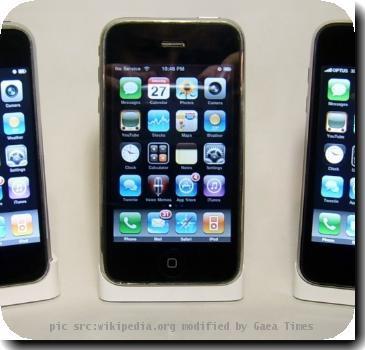Kodak posts $443 million profit in 4Q as sales rise 6 percent, shares climb
By Ben Dobbin, APThursday, January 28, 2010
Kodak posts 1st quarterly profit in more than year
ROCHESTER, N.Y. — Eastman Kodak Co., the remade picture-taking pioneer, broke a series of four straight quarterly losses with a $443 million profit in the last three months of 2009, sending its shares sharply higher.
The earnings reported Thursday indicate Kodak, whose four-year makeover as a digital-photography heavyweight was sucker-punched in 2008 by the economic downturn, may be gathering momentum once again.
Its results in the October-December period were lifted by consumer and commercial inkjet printer sales, leaner costs and big licensing gains from its rich array of digital-imaging inventions.
“Kodak has turned the corner operationally,” said Ulysses Yannas, a broker with Buckman, Buckman & Reid in New York. “What they’re doing very successfully is replacing the highly profitable film sales that they’re losing with highly profitable” sales of inkjet printers, ink and paper.
“What we have not seen yet is significant profitability from operations excluding intellectual property,” he added. “But it’s a lot brighter this year than anybody dreamt it would be.”
Kodak earned the equivalent of $1.40 a share in the fourth quarter, compared with a loss of $918 million, or $3.42 a share, a year earlier. Sales rose 6 percent to $2.58 billion from $2.43 billion.
Kodak said it earned $1.08 a share when one-time items are excluded, handily beating Wall Street forecasts. Analysts surveyed by Thomson Reuters expected, on average, a much lower profit of 18 cents a share on lower sales of $2.38 billion.
Its shares soared $1.17, or 24.6 percent, to close at $5.92 in Thursday. They are trading in a 52-week range of $2.01 to $7.24.
Kodak said it won’t provide 2010 guidance until next week’s investor meeting “but it seems likely that consensus estimates could move higher,” Citi analyst Richard Gardner said. Analysts on average expect Kodak to lose 52 cents a share this year.
Kodak drastically cut costs as it underwent a perilous transition from film to digital imaging from 2004 to 2007. Beginning in the fourth quarter of 2008, however, the global economic swoon sapped sales of both digital and film-based photography products.
“Our strategy is working,” Chief Executive Antonio Perez said in a conference call with analysts. “While the global economy has not fully recovered, the level of business activity increased” in the second half of 2009.
“I’m very pleased … with the positive momentum with which we’re entering 2010,” Perez said.
The 129-year-old Rochester-based company pared its payroll from 64,000 to 26,900 from 2004 to 2007. It eliminated another 4,100 jobs last year, shrinking its work force to a 1930s-era low of 20,300 from a 1988 peak of 145,300.
Digital sales rose 12 percent to $1.99 billion from $1.78 billion in the quarter, with operating profits jumping to $380 million from a $41 million loss a year earlier.
Traditional film-based revenue fell 10 percent to $589 million from $652 million. Helped by cost reductions and rising sales of movie film, operating profits in the segment rose 36 percent to $53 million.
Kodak said it achieved its target of doubling sales of consumer inkjet printers to more than 2 million in 2009, although that business isn’t expected to be profitable until 2011. The company estimates that consumer inkjet overall is a $50 billion market.
Its line of home printers, launched in 2007, produce high-quality photos using inexpensive ink cartridges. Priced about 15 percent higher than comparable printers, they’re targeted at consumers who print more pictures on average.
Kodak said its gross profit margin widened to 34.4 percent of sales from 20.4 percent a year earlier. About 6 percentage points of the increase was driven by productivity gains and higher demand for digital plates and thermal paper for retailers, plus productivity gains for digital cameras, consumer printers, electrophotographic printing and traditional photofinishing.
Another 8 points came from nonrecurring intellectual property licensing agreements.
After a yearlong legal tussle, Kodak negotiated royalty paying deals with Samsung Electronics Co. and LG Electronics Inc. last month. It followed up in January by suing Apple Inc. and Research in Motion Ltd. over digital-camera technology in their iPhone and BlackBerry smart phones.
While Kodak’s drive into digital photography was hindered by a reluctance to phase out film — it created the world’s first digital camera in 1975 but only began selling mass-market digital cameras in 2001 — it didn’t lag behind in research.
Kodak has amassed more than 1,000 digital-imaging patents, and almost all of today’s digital cameras rely on that technology. On average, it expects to generate $250 million to $350 million annually through 2011 in licensing fees and royalties from its intellectual property.
It booked $420 million in 2009 and will draw $450 million in payments from Samsung alone this year, possibly in the first quarter.
For all of 2009, Kodak lost $210 million, or 78 cents a share, compared with a loss of $442 million, or $1.57 in 2008. Sales fell 19 percent to $7.6 billion from $9.4 billion. Analysts were expecting a wider loss of $1.47 a share on $7.4 billion in sales.
On the Net: www.kodak.com
Tags: Contracts And Orders, New York, North America, Rochester, United States

